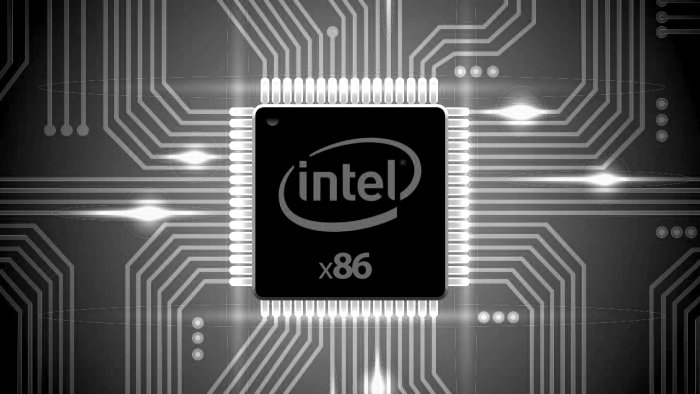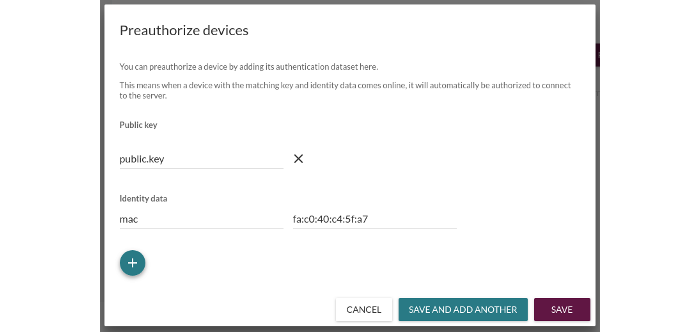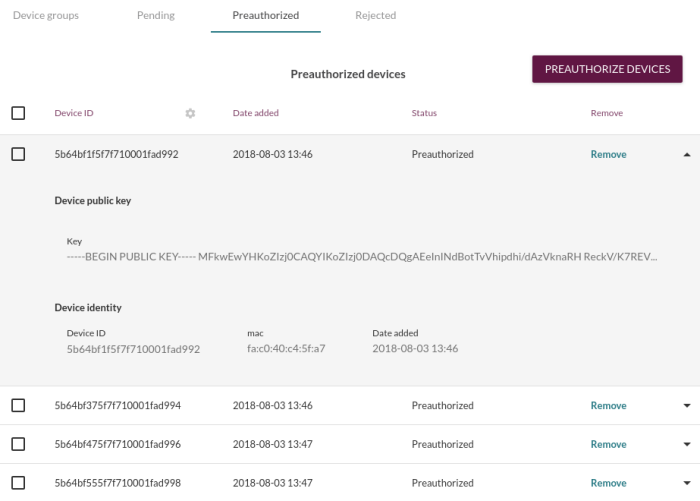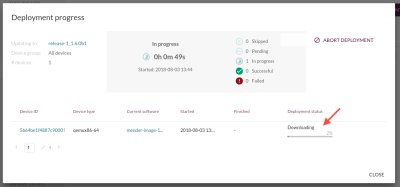Mender 1.6 beta is here and ready for you to try out!
The ongoing focus for Mender is to broaden the supported device types and making the device integration process as easy as possible. The key features of Mender 1.6 beta are covered below, and you can see the detailed items in the Mender 1.6.0 beta release notes.
Autopatching for raw flash devices
In order to support atomic updates with rollback capability, Mender requires integration into the boot process of devices. To simplify this integration process, a tool to automate the integration (patch generation) was released in December 2017. In its first release the autopatching tool supported only block-based storage.
We are happy to announce that with Mender 1.6 beta, automatic patch generation is also supported for raw (i.e. NAND/NOR) flash devices! Take a look in the updated documentation on raw flash for an introduction on how to get started. For a comparison, you can see how many fewer steps this is than supporting raw flash in Mender 1.5!
x86 BIOS support
Mender 1.5 introduced support for x86 devices through the UEFI framework.
In Mender 1.6 this functionality is extended; Mender 1.6 also supports BIOS-based x86 devices! Take a look at the documentation on GRUB support for steps to integrate Mender with BIOS-based x86 devices.
Yocto Project sumo (2.5) support
meta-mender has a brand new sumo branch, so you can integrate Mender with this newest stable release of the Yocto Project!
mender -check-update
When testing and diagnosing and you have shell access to a device, it is often useful to kick off an update immediately rather than waiting for the next scheduled update check by the Mender client daemon.
This is now supported by running mender -check-update on the device. This command will communicate with a running Mender client daemon and tell it to check for a new update with the Mender server immediately.
Note that this functionality is only applicable when running Mender in managed mode; if you are running Mender in standalone mode you are already triggering the update process from the shell or a script.
Custom device identity attribute
You can now select which of your device identity attributes you want to use in the Mender UI. For example, you could use the mac address, hostname or any other attributes you have as part of your device identity scheme. This helps you recognize the devices more easily, both in the Devices tab, and in Deployments.
To configure which device identity attribute to use, simply click the gear icon at the top of the ID column under Devices. You can also set it from Global settings. In order to avoid confusion, this configuration is global and affects all users of your Mender server (for on-premise Mender) or organization (for Hosted Mender).
Preauthorize UI
In order to integrate Mender with the workflow of mass producing of devices, preauthorizing devices was introduced in Mender 1.4. This enables a Mender client to securely connect to a Mender server without any manual approval steps.
In Mender 1.6 you can preauthorize devices directly in the UI.
You can also view and remove preauthorizations from the UI.
The goal is to make it easier to getting started with preauthorizing devices before integrating the preauthorize API into your device manufacturing process. Of course, the UI also uses this API, so preauthorization changes will be in sync between the UI and API.
Deployment progress bar
When doing deployments, the deployment progress bar for each device will now move forward continuously as your deployment in in progress.
WiFi support in Raspberry Pi 3 demo images
WiFi is now enabled in Raspberry Pi 3 demo images (BeagleBone Black does not have a WiFi module onboard).
In order to test the new demo images, follow the documentation tutorial for on-premise Mender or the Help section in Hosted Mender.
Please note that in general you can use any network interface (e.g. Ethernet, WiFi) to connect to a Mender server, the new WiFi support is part of the demo images used for initial testing of Mender.
Try Mender 1.6 beta
The documentation has a new 1.6 section that includes all the resources you need to get going. To test the new features, you can start with these pages:
- Install a Mender 1.6 beta demo server
- Use autopatching for integrating raw flash devices
- Integrate with BIOS-based x86 devices
- Build a Mender 1.6 beta Yocto Project image
- Preauthorize devices
Sign up for Hosted Mender
Hosted Mender is a secure Mender server we host for you, so you do not have to spend time maintaining scalability, security, certificates, uptime, upgrades and compatibility of the Mender server. Simply point your Mender clients to our server! It is inexpensive and priced very competitively with the cost of self-hosting a Mender server.
Hosted Mender is already updated and fully compatible with the new Mender 1.6 beta client releases.
Sign up and get your $120 free credit for Hosted Mender today.
Support for your board
If you are getting started with OTA updates or do not have time to integrate the Mender client with your board, we are happy to help with professional services to enable Mender support for your board!
Share your feedback
We are happy to continue to see your general feedback on Mender, be it positive or need for improvement, on the Mender mailing list. Your continued feedback ensures Mender will meet your needs even better in the future!
If you believe you have encoutered a bug, please submit your report at the Mender JIRA issue tracker.
We hope you enjoy the new features and are looking forward to hearing from you!
Recent articles
The struggle to reach global markets for medical device manufacturers: The importance of international compliance
The differences between the US FDA’s device approval process and the EU’s medical device regulation (MDR): An essential dual-compliance framework for global manufacturers
Why OTA updates are now mission critical for future-proofed device lifecycle management
Learn why leading companies choose Mender
Discover how Mender empowers both you and your customers with secure and reliable over-the-air updates for IoT devices. Focus on your product, and benefit from specialized OTA expertise and best practices.








